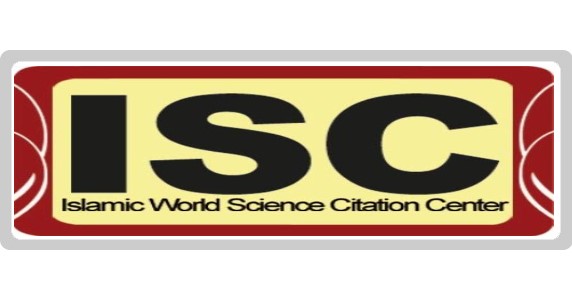بررسی رابطه سبک یادگیری، میزان توجه در حل مسئله ریاضی دانش آموزان با واسطهگری یادگیری بدنمند
کلمات کلیدی:
سبک یادگیری , توجه , حل مسائل ریاضی , یادگیری بدنمندچکیده
هدف: پژوهش حاضر با هدف بررسی رابطه سبکهای یادگیری و میزان توجه با حل مسائل ریاضی، با نقش واسطهای سبک یادگیری بدنمند در میان دانشآموزان پایه چهارم ابتدایی در ناحیه ۵ مشهد انجام شد.
روششناسی: این مطالعه از نوع توصیفی-همبستگی و با استفاده از مدلسازی معادلات ساختاری انجام شد. نمونهگیری به روش خوشهای از میان جامعه آماری ۶۸۹۲ نفری انجام و ۳۶۴ دانشآموز انتخاب شدند. ابزارهای جمعآوری داده شامل پرسشنامه سبکهای یادگیری مامیکام (۲۰۱۰)، پرسشنامه توجه براون و رایان (۲۰۰۳)، پرسشنامه محققساخته سبک یادگیری بدنمند و آزمون حل مسئله ریاضی مبتنی بر استانداردهای TIMSS بود.
یافتهها: تحلیل دادهها نشان داد سبک یادگیری بدنمند نقش واسطهای مثبت و معناداری در رابطه بین سبک یادگیری ترجیحی و توجه با حل مسائل ریاضی ایفا میکند. روابط مستقیم بین متغیرهای سبک یادگیری، توجه و یادگیری بدنمند با حل مسائل ریاضی نیز معنادار گزارش شد. شاخصهای برازش مدل ساختاری (ضریب تعیین R² و شاخص پیشبینی Q²) در حد مطلوب بودند. همچنین، شاخصهای روایی همگرا، واگرا و پایایی مرکب نیز تأیید شدند.
نتیجهگیری: سبک یادگیری بدنمند به عنوان یک سبک نوین و مکمل میتواند در بهبود عملکرد ریاضی و افزایش سطح حل مسئله در دانشآموزان مؤثر باشد. این سبک با فعالسازی همزمان ذهن، بدن و محیط، یادگیری ریاضی را در بستر واقعی و معنادار تقویت میکند.
دانلودها
مراجع
Agustama, Y. (2013). Identifikasi gaya belajar matematika siswa kelas VII di SMP Negeri 14 Malang Malang: Universitas Negeri Malang]. https://repository.um.ac.id/15795/
Baars, S., Schellings, G. L. M., & Joore, J. P. (2023). Physical learning environments' supportiveness to innovative pedagogies: Students' and teachers' experiences. Learning Environments Research, 26(3), 617-659. https://doi.org/10.1007/s10984-022-09433-x
Babaei, A., Darvishi, D., Yarahmadi, M., & Golestani, T. (2021). The role of problem-solving skills in predicting mathematical motivation and mathematical self-efficacy in children with specific mathematical learning disorders. Empowerment of Exceptional Children, 13(1). https://doi.org/10.22034/ceciranj.2021.29056.15545
Babaei, B., Shabani-Verki, B., Javidi, T., & Moghimi, A. (2018). Embodied learning: A critique of the philosophical neuroscience approach to cognition and learning. Bi-Quarterly Journal of Educational Philosophy, 2(2), 61-90. http://pesi.saminatech.ir/Article/13970707164634
Baiduri, B. (2021). The process of students' mathematical connection in solving mathematical problems in terms of learning styles. Turkish Journal of Computer and Mathematics Education, 12(6), 1451-1466. https://doi.org/10.17762/turcomat.v12i6.2684
Chytrý, V., Medová, J., Říčan, J., & Škoda, J. (2020). Relation between pupils' mathematical self-efficacy and mathematical problem solving in the context of the teachers' preferred pedagogies. Sustainability, 12(23), 102-115. https://doi.org/10.3390/su122310215
Chytrý, V., Říčan, J., Eisenmann, P., & Medová, J. (2020). Metacognitive knowledge and mathematical intelligence: Two significant factors influencing school performance. Mathematics, 8(5), 950-969. https://doi.org/10.3390/math8060969
Chytrý, V., Rican, J., & Korinkova, R. (2019). The influence of a teacher's innovation on a pupil's relationship to mathematics. Proceedings of the 12th International Conference of Education, Research and Innovation,
Dwiyanto, A. R., & Kurniasih, M. D. (2024). Analysis of mathematical literacy ability based on learning style of middle school students. Edunesia: Jurnal Ilmiah Pendidikan, 5(1), 1-13. https://doi.org/10.51276/edu.v5i1.605
Elbeigi, R., & Mirrasoli, K. S. (2023). Investigating the relationship between learning styles and goal orientation with academic procrastination in students with the mediating role of locus of control. First International Conference on Psychology, Social Sciences, Educational Sciences and Philosophy,
Gallotta, M. C., Bonavolontà, V., Zimatore, G., Iazzoni, S., Guidetti, L., & Baldari, C. (2020). Effects of open (racket) and closed (running) skill sports practice on children's attentional performance. The Open Sports Sciences Journal, 13(1), 105-113. https://doi.org/10.2174/1875399X02013010105
Gholami, H., Aramesh, E., & Golshani, S. (2022). Learning styles and attention control; the case of Iranian female EFL learners. Research in English Language Pedagogy, 10(4), 565-580. https://doi.org/10.30486/relp.2022.1944619.1315
Guler, K., & Aydin, A. (2022). Comparing the working memory capacity with cognitive flexibility, cognitive emotion regulation, and learning styles of university students: A domain general view. Dementia and geriatric cognitive disorders extra, 12(3), 131-149. https://doi.org/10.1159/000526226
Guo, M., Leung, F. K. S., & Hu, X. (2020). Affective determinants of mathematical problem posing: The case of Chinese Miao students. Educational Studies in Mathematics, 105(3), 367-387. https://doi.org/10.1007/s10649-020-09972-1
Hakimzadeh, R., Roohi, M., & Moghadamzadeh, A. (2023). Investigating the relationship between professors' teaching style and students' motivation and academic engagement in an online learning environment with the mediating role of participatory learning styles. Higher Education Curriculum Studies, 14(27). https://doi.org/10.22034/HECS.2023.177044
Hui, E., & Rosli, R. (2021). Kebimbangan dan efikasi kendiri terhadap pembelajaran matematik dalam kalangan pelajar tingkatan empat. Malaysian Journal of Social Sciences and Humanities, 6(5), 41-53. https://doi.org/10.47405/mjssh.v6i3.690
Irvine, J. (2019). Strategies for enhancing mathematics learning for students who are kinesthetic learners. Gazette-Ontario Association of Mathematics, 57(9), 41-44. https://doi.org/10.47405/mjssh.v6i3.690
Latipah, E. D. P., & Afriansyah, E. A. (2018). Analysis of students' mathematical connection ability using CTL and RME learning approaches. Journal of Mathematics, 17(1), 1-12. https://doi.org/10.1088/1742-6596/1460/1/012028
Machromah, I., Ishartono, N., Mirandhani, A., Samsudin, M., & Basry, W. (2021). PISA problems solving of students with visual learning styles. Journal of Physics: Conference Series, 1720(1), 56-73. https://doi.org/10.1088/1742-6596/1720/1/012010
Mamickam, K. (2010). The learning styles and achievement of students in science using visual, auditory and kinesthetic (VAK) modality Universiti Teknologi Malaysia]. http://eprints.utm.my/28540/
Pasani, C. F. (2018). The use of problem-solving as a method in the teaching of mathematics and its influence on students' creativity. International Journal of Engineering Research and Technology, 11, 451-479. https://www.ripublication.com/irph/ijert18/ijertv11n3_07.pdf
Polat, H., & Özkaya, M. (2023). The effect of problem posing-based active learning activities on problem-solving and posing performance: The case of fractions. Journal of Pedagogical Research, 7(1), 67-81. https://doi.org/10.33902/JPR.202317880
Popham, M., Adams, S., & Hodge, J. (2020). Self-regulated strategy development to teach mathematics problem solving. Intervention in School and Clinic, 55, 154-161. https://doi.org/10.1177/1053451219842197
Rabin, L. A., Krishnan, A., Bergdoll, R., & Fogel, J. (2021). Correlates of exam performance in introductory statistics courses: Basic math skills along with self-reported psychological/behavioral and demographic variables. Statistics Education Research Journal, 20, 1-21. https://doi.org/10.29173/cjfy30090
Van Dusen, D. P., Kelder, S. H., Kohl, H. W., III, Ranjit, N., & Perry, C. L. (2011). Associations of physical fitness and academic performance among schoolchildren. Journal of School Health, 81(12), 733-740. https://doi.org/10.1111/j.1746-1561.2011.00652.x
Virgana, V. (2019). Understanding of mathematical concepts through cooperative learning, and learning styles. Journal of Education and Learning, 13, 212-218. https://doi.org/10.11591/edulearn.v13i2.9917
Yunus, N. A., & Eid, I. M. (2023). Physical learning as the preferred learning style among IIUM Malay undergraduates. IIUM Journal of Religion and Civilisational Studies, 6(1), 44-56. https://doi.org/10.31436/ijrcs.v6i1.273
Zhang, J., Xiao, W., Soh, K. G., & et al. (2024). The effect of the Sport Education Model in physical education on student learning attitude: A systematic review. BMC public health, 24(4), 930-949. https://doi.org/10.1186/s12889-024-18243-0
دانلود
چاپ شده
ارسال
بازنگری
پذیرش
شماره
نوع مقاله
مجوز
حق نشر 2025 سجاد حسن زاده (نویسنده); بیژن بابائی; زهرا میرزائی گیمزرد (نویسنده)

این پروژه تحت مجوز بین المللی Creative Commons Attribution-NonCommercial 4.0 می باشد.










